This roast pork tenderloin with Dijon mustard sauce is everything you want in a dinner recipe-tender, juicy, flavorful, and done in just 30 minutes. The pork roasts beautifully in the oven, while a creamy Dijon sauce adds tangy, savory flavor that pairs perfectly with the mild sweetness of the pork. Whether you're cooking a quick weeknight meal or hosting friends, this easy pork tenderloin recipe is a guaranteed crowd-pleaser.
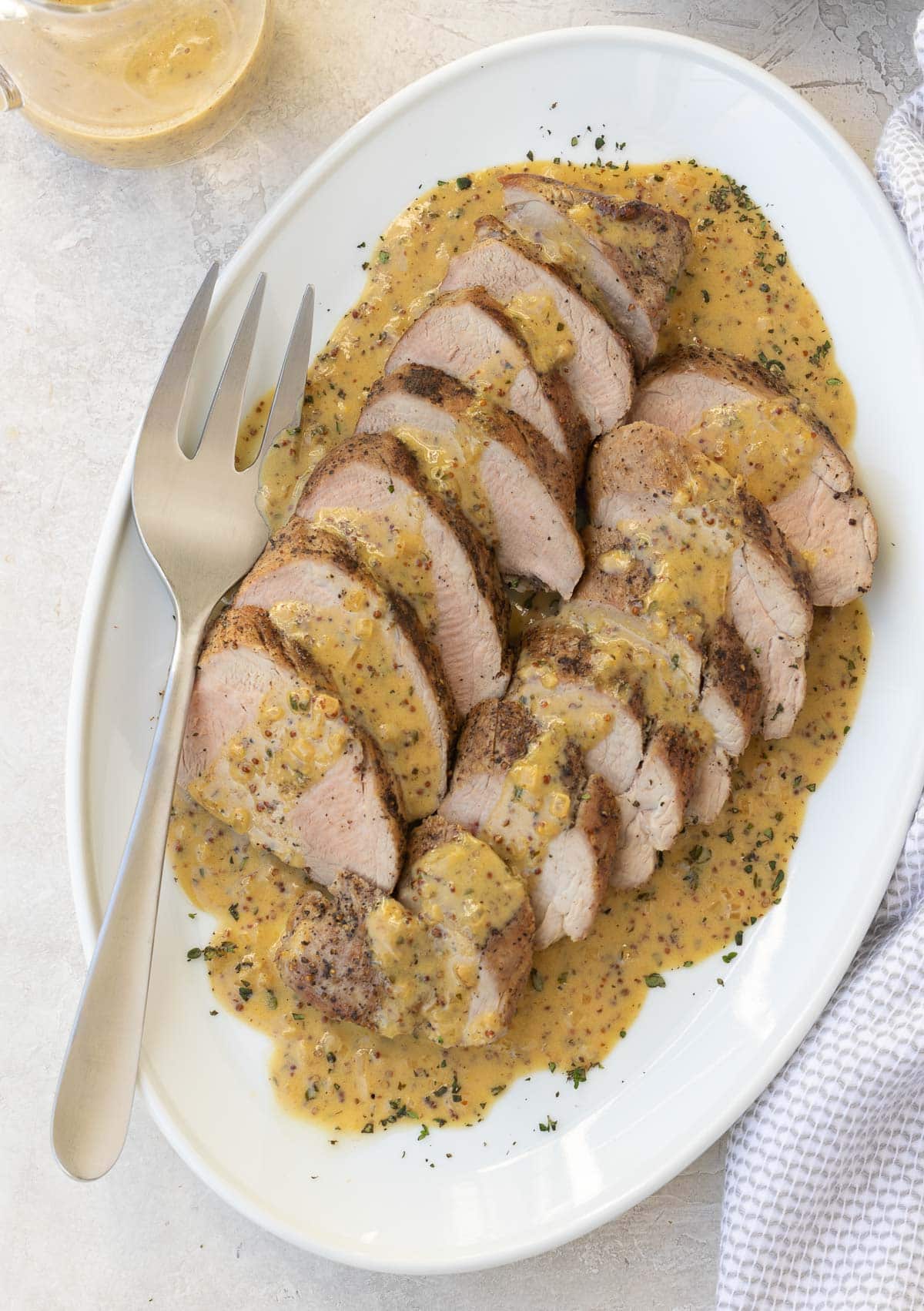
Pork tenderloin is one of my favorite cuts of meat - quick cooking, tender, and so versatile. It shines with sauces, especially Dijon mustard, my favorite (I keep 2-3 jars in my pantry). Dijon adds bold flavor and naturally thickens into a luscious sauce, turning this easy roast pork tenderloin into a 30-minute dinner that's both both easy and elegant.
Jump to:
Why You'll Love Roast Pork Tenderloin
- Ready in 30 minutes - Quick-cooking, perfect for weeknights or special occasions.
- Tender and juicy - Seared on the stovetop, finished in the oven to perfection.
- Luscious mustard sauce - With white wine, fresh herbs, and a touch of cream.
If you enjoy pork, try this beautiful, holiday-worthy pistachio crusted pork rib roast or this smoked pork tenderloin if you have a pellet grill or smoker.
Ingredients You'll Need
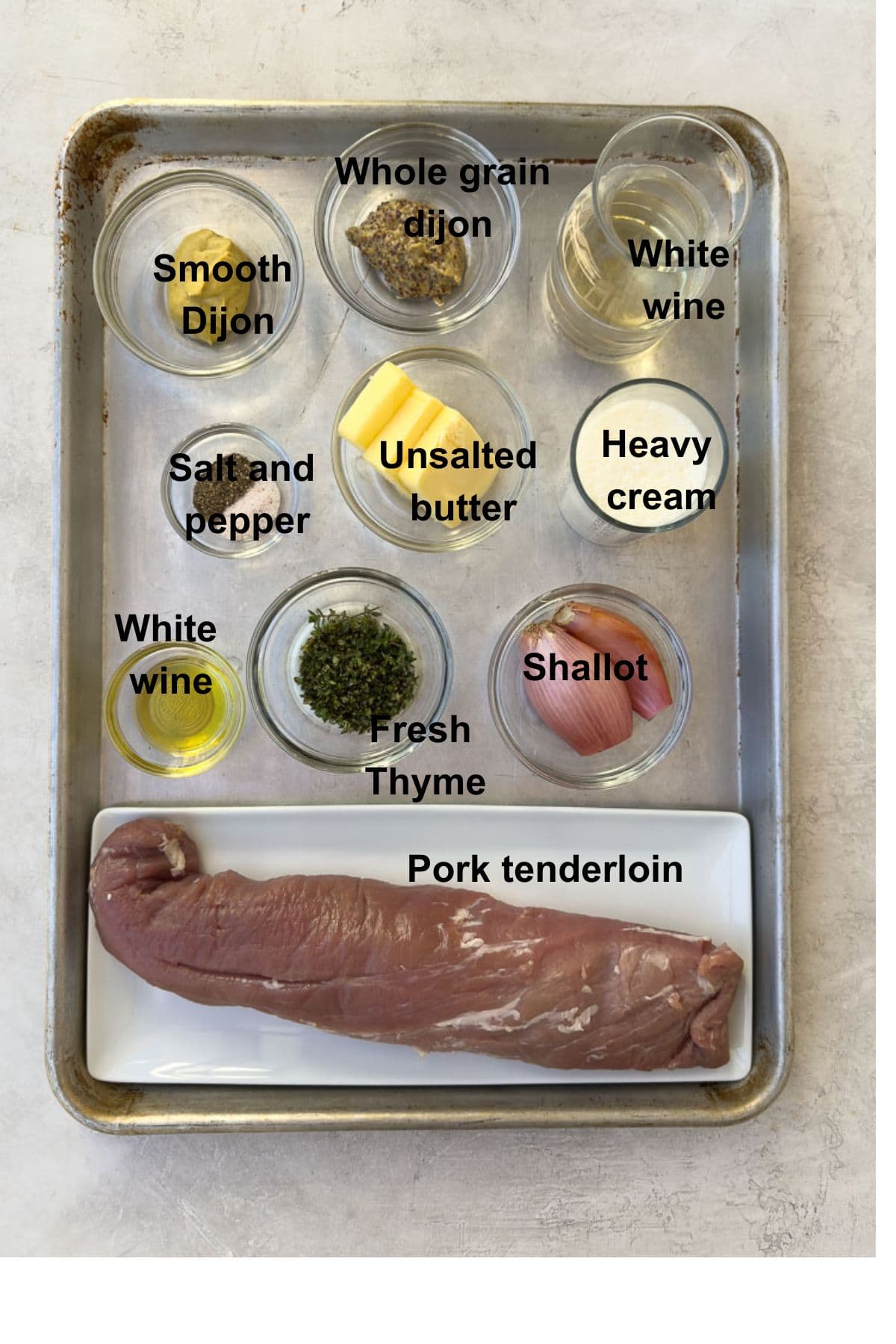
- Pork tenderloin - Sometimes labeled as pork fillet.
- Oil - Olive oil, avocado oil, or a neutral oil all work well for searing.
- Butter - Use unsalted butter for salt level control.
- Heavy cream - Look for heavy cream or heavy whipping cream (the same). The higher fat content means a richer, silkier Dijon mustard sauce.
- White wine - Essential for deglazing the pan and deepening flavor. Sauvignon Blanc or Chardonnay are ideal, but dry white vermouth is a handy alternative. Mini bottles are perfect for cooking so you don't have to open a full bottle.
- Shallot - Mild, slightly sweet, and classic in French cooking. Shallots add both depth and texture to the creamy mustard sauce.
- Dijon mustard - You'll need two kinds: creamy Dijon for body and flavor, and whole-grain Dijon for rustic texture and bite. I prefer the French brands.
- Fresh herbs - Thyme pairs beautifully here, but rosemary also works. Use fresh when you can; dried thyme is a good fallback.
Please find the measurements in the recipe card. if you like to brine pork, use my pork brine recipe ahead of cooking.
Chef's Tip - Pork Tenderloin vs. Pork Loin (Roast)
Don't confuse pork tenderloin with pork loin. They come from different parts of the animal. Pork tenderloin is always boneless, very lean, and about 1 pound in size, while pork loin roasts are much larger (2-5 pounds), may be bone-in or boneless, and often have a fat cap. Pork loins are less expensive and take longer to cook, while pork tenderloin is pricier but cooks quickly and stays tender without needing that fat layer.
If you love tenderloin as a cut of meat, try this slow roasted beef tenderloin, also terrific for special occasions.
Substitutions and Variations
- Wine substitutions - Skip the wine and swap in a good quality, low-sodium chicken broth or stock. You can also use apple cider vinegar diluted with water (half and half) or the same ratio with lemon juice. These options add acidity and brightness without alcohol. For more substitution ideas, see this guide to wine substitutes in cooking.
- Mustard variations - Prefer a smoother, less textured Dijon cream sauce? Simply use all creamy Dijon mustard and skip the whole-grain. Use just under double the amount of creamy Dijon for balanced flavor.
How to Roast Pork Tenderloin
Start: Get the pork out of the refrigerator an hour ahead of time so it's closer to room temperature for better roasting. Pre-heat the oven to 375°F. Trim the pork tenderloin of silver skin (it looks like packaging tape) and excess fat with a sharp knife. Place a frying pan over medium to medium-high heat.
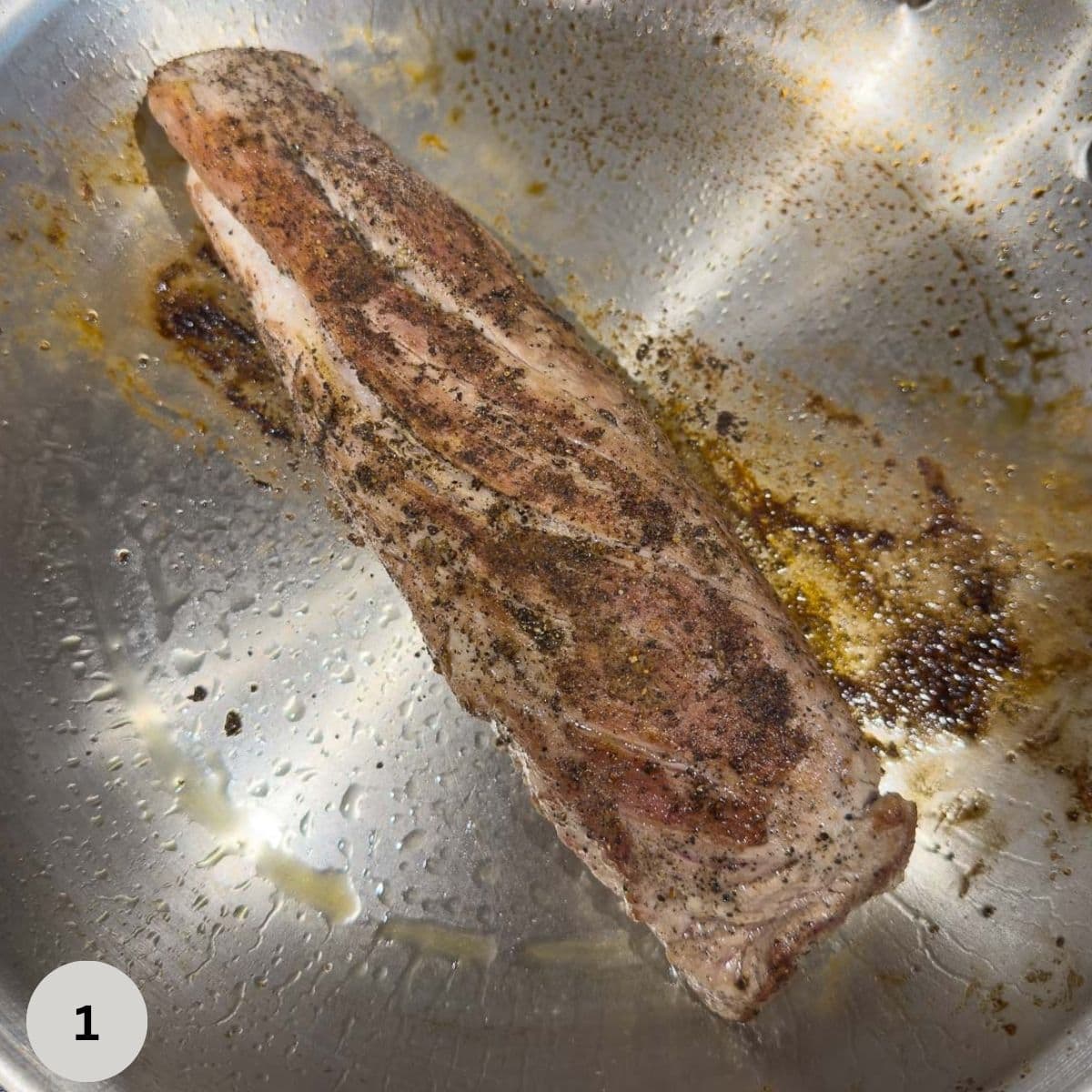
- Season pork with salt and pepper. Add a little oil to the pan, then add the pork. It should sizzle when it hits the pan. Sear on all sides until nicely brown.
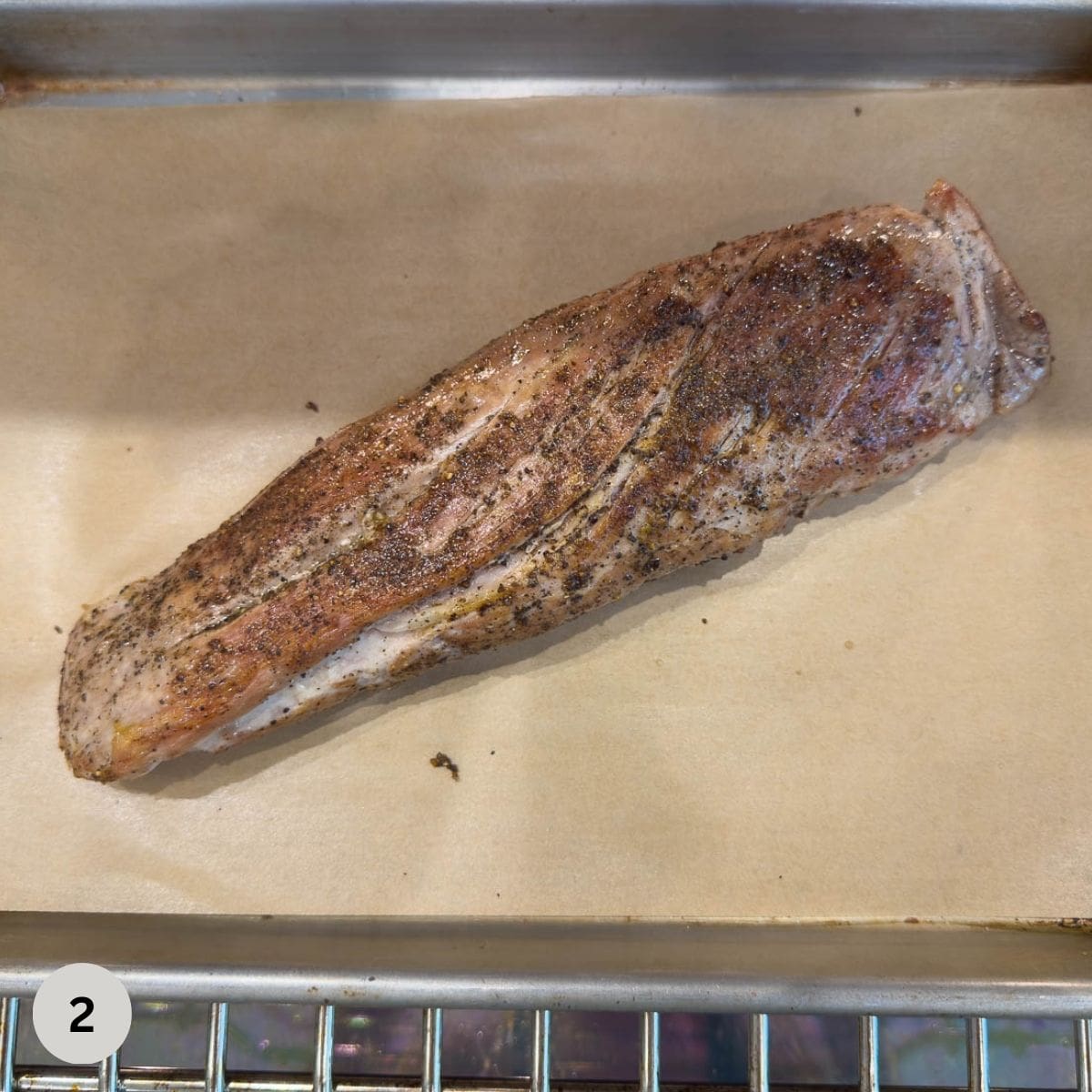
- Place the pork on a rimmed baking sheet with parchment. Use a pastry brush to lightly add a little extra olive oil for moisture and shine. Place in the oven to roast, about 10 minutes, 140°F -145°F.
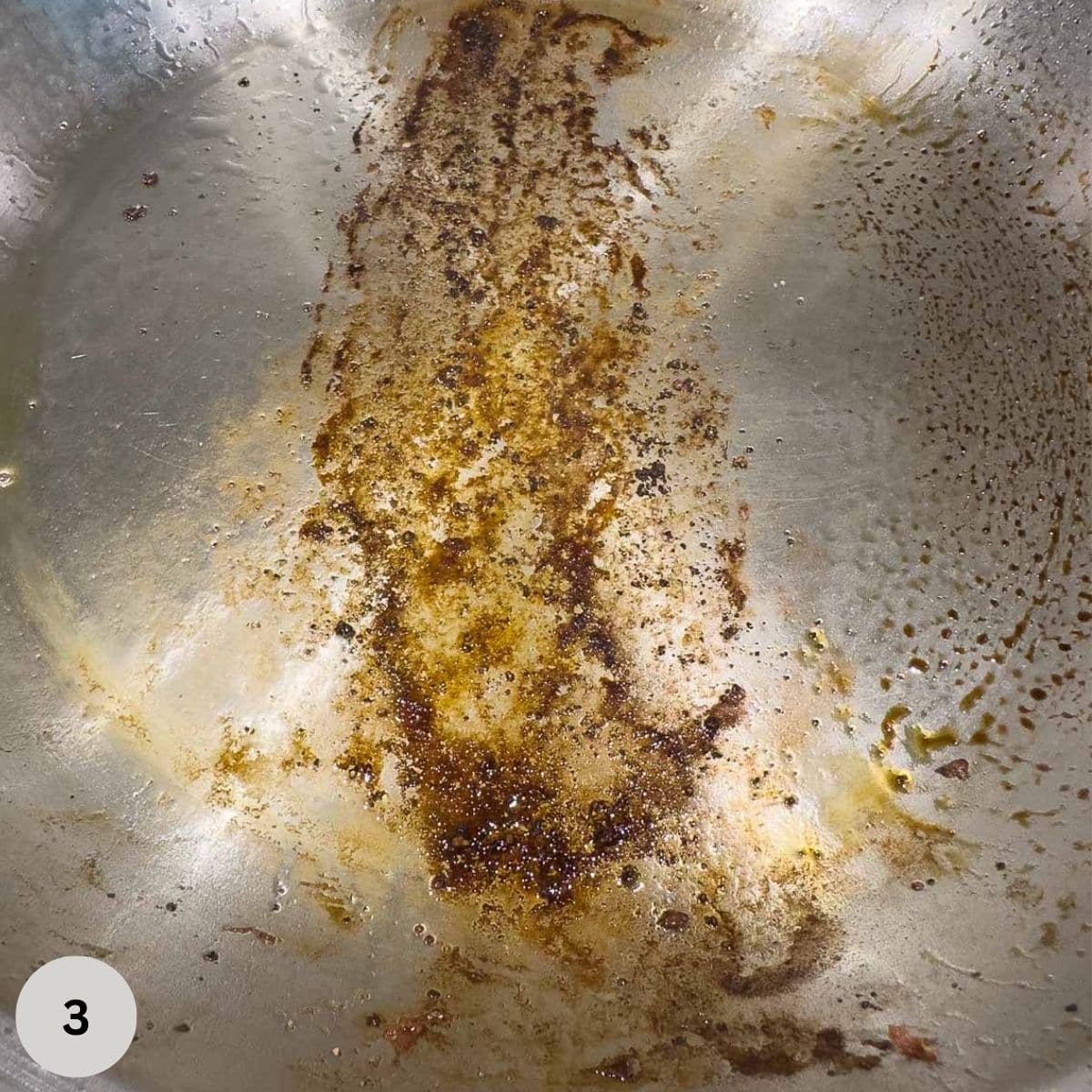
3. DO NOT WASH THE PAN, use it to make the sauce.
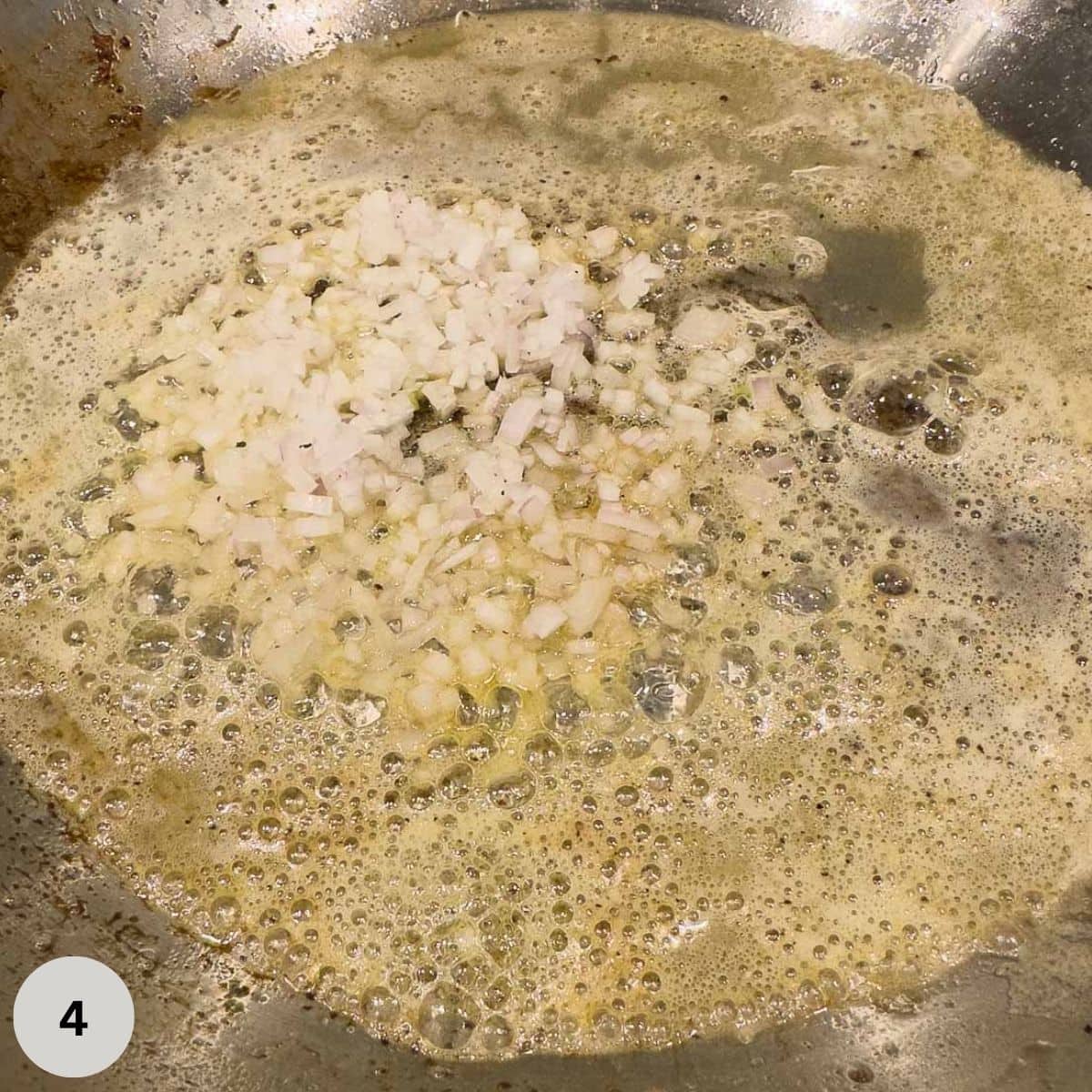
4. Over medium heat, add the butter to the still hot pan, then shallots. When the butter is melted, add shallots and thyme. Cook, stirring and scraping the bottom of the pan until soft, 1-2 minutes.
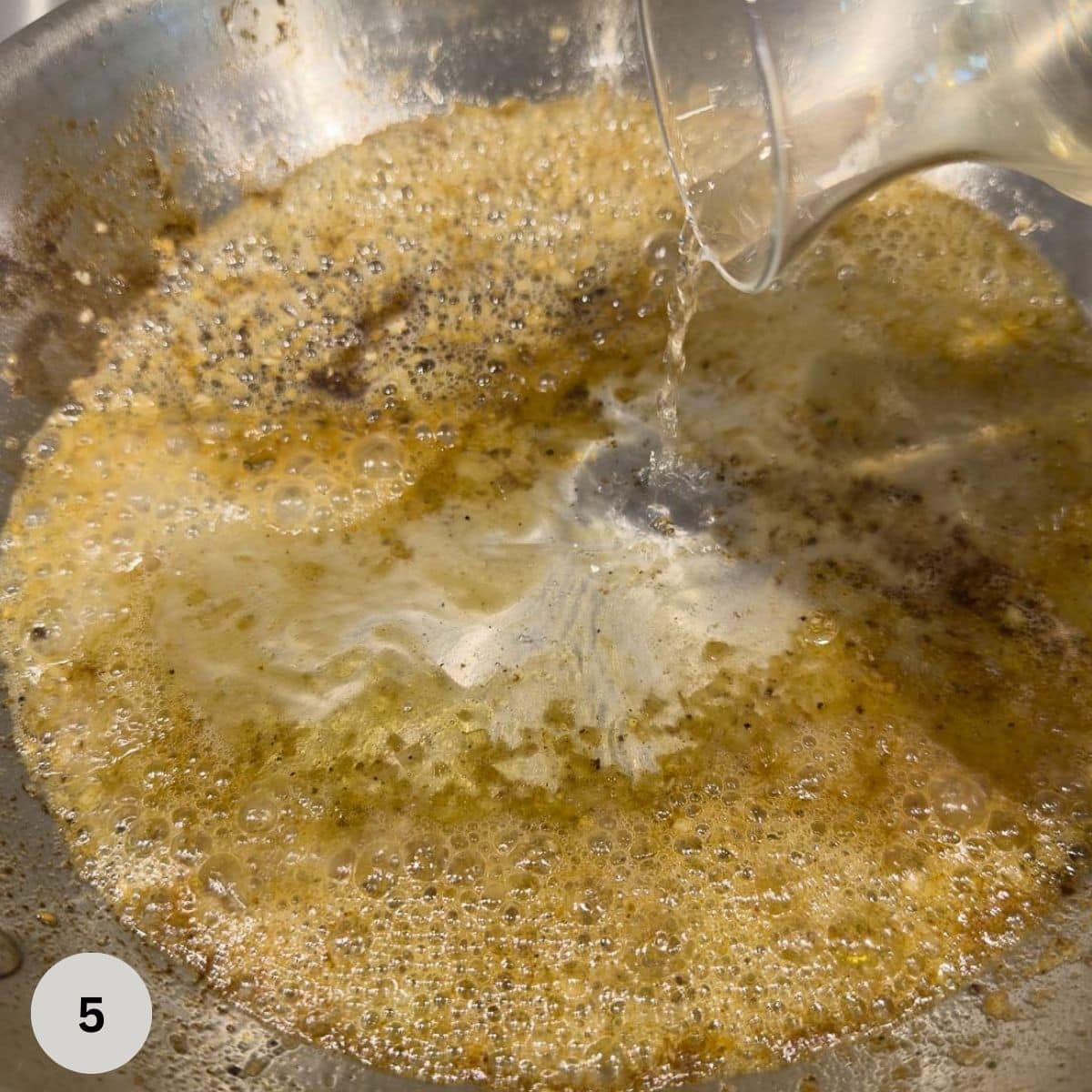
- Add wine to deglaze the pan, scraping up all of the tasty bits on the pan bottom. Cook most of the wine off.
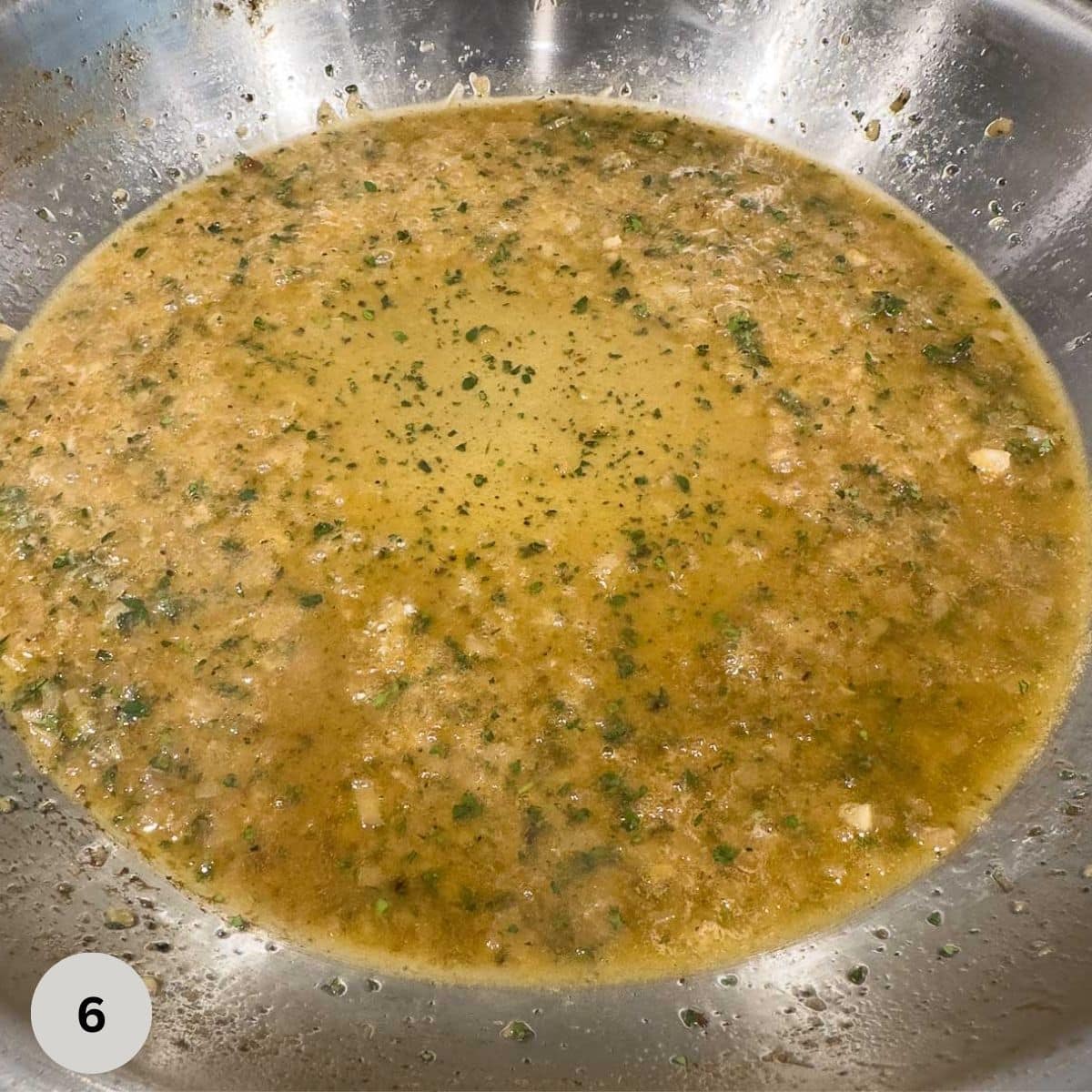
- Whisk together the cream and both mustards. Add to the pan, still stirring. The sauce will start to thicken quickly.
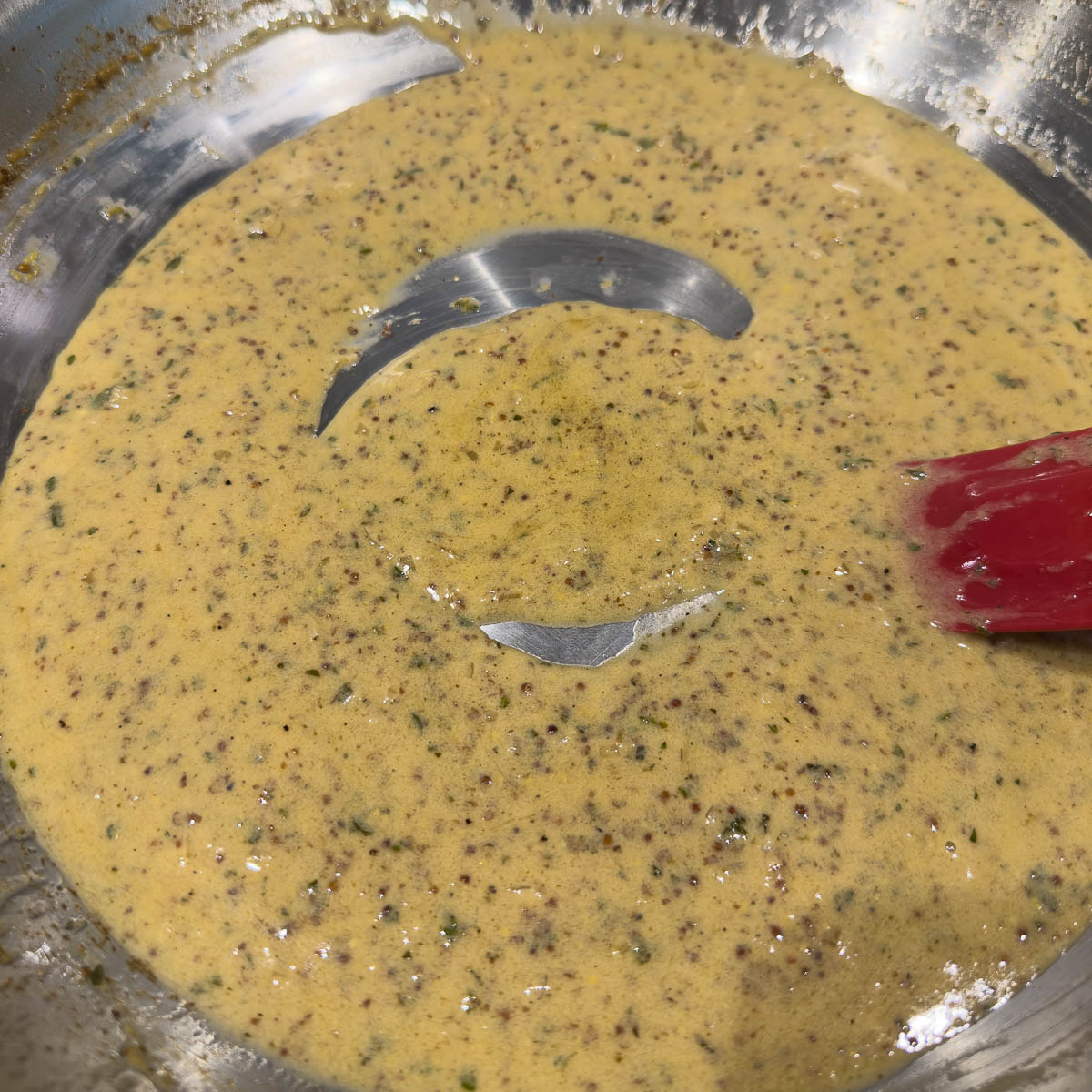
7. Sauce is done when you can draw a line through it. When pork is done, remove to a cutting board, rest 5-10 minutes covered, then slice and serve with the sauce.
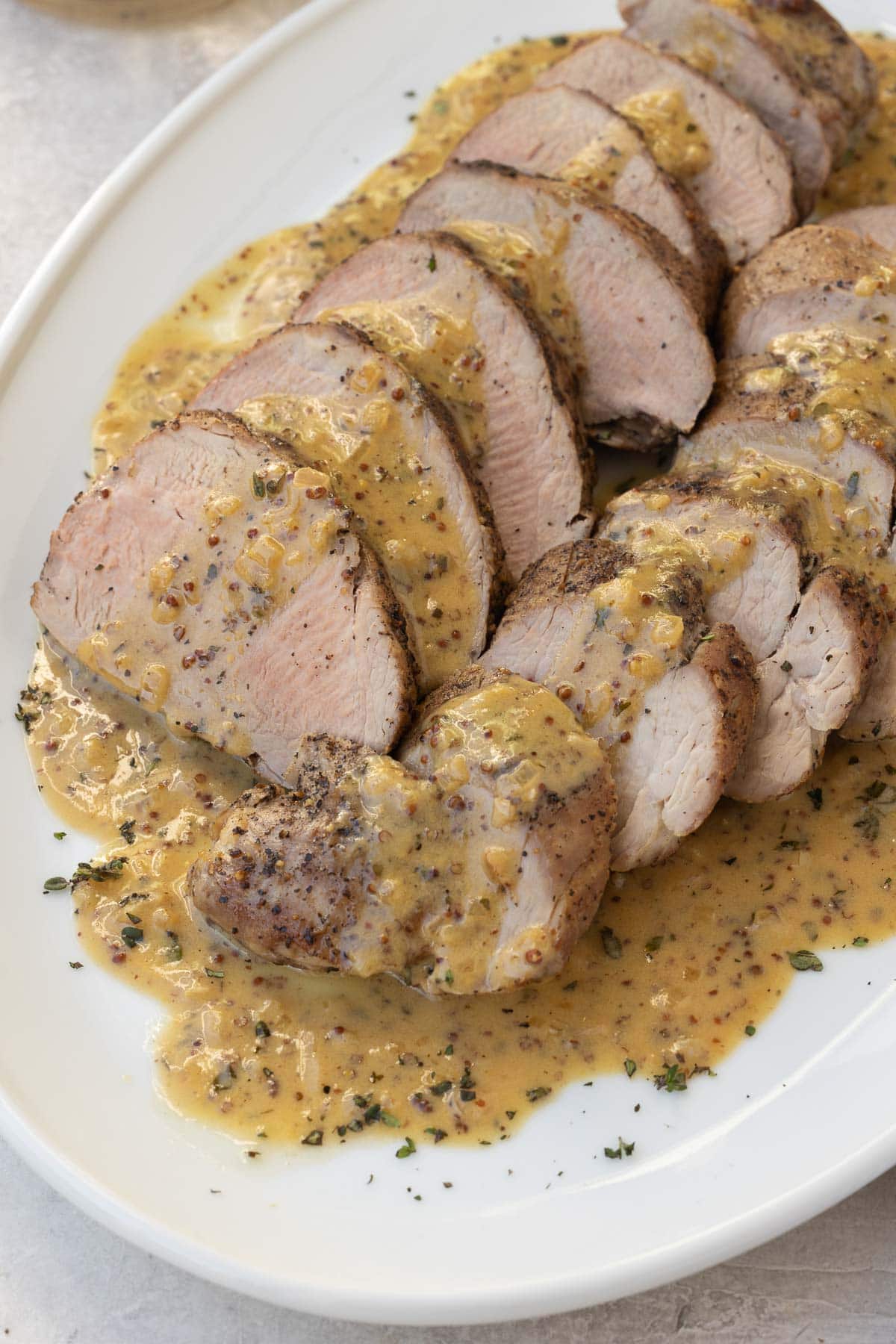
Chef's Tip on Cooking oil. What not to use? It's best avoid seed oils or vegetable oils. They are really not healthy because they are inflammatory, often refined with chemicals, plus most use GMO crops. I use olive oil for most of my cooking needs (yes olive oil is more safe and stable than many say). Coconut oil is good, where the flavor works. A terrific fat for higher heat cooking? Ghee, made from butter. It's a clarified pure fat (no water) and it is lactose and casein-free. And a favorite? This clean, healthy, neutral oil.
How to Serve
What do you eat with roast pork tenderloin? Just about anything! Here are my suggestions for serving:
- Green beans: try simple green beans drizzled with Balsamic glaze, or green beans almondine.
- Potatoes: try these easy Dutch potatoes with fresh herbs or whipped sweet potatoes.
- One of our favorite veggies, this air fryer broccolini is a terrific, easy side dish that takes just minutes!
- Asparagus: roast asparagus or even bright green creamy asparagus soup as a starter.
- Roasted vegetables like these roasted carrots with thyme.
Of course a good salad is always welcome.
Recipe FAQs
This sear and finish in the oven technique is a great way to insure moist pork tenderloin. To not dry it out, don't over cook it. It's done when an instant-read digital thermometer reads 140°F - 145°F. Remember the temperature will rise while it is resting for a few minutes, covered with foil. And because pork tenderloin is lean, it's good to serve with a sauce for added moisture.
Pan searing pork tenderloin gives it a nice browned and tasty exterior. Finish in the oven for just a few minutes at 375°F. For a convection oven, about 10 minutes. A few minutes longer in a standard conventional oven.
Leftover roast pork tenderloin keeps in the refrigerator for 3-4 days. Eat it cold or warm it up. I've even chopped up extra pieces and used it in tacos. Leftover Dijon sauce is very thick and even good cold. If you want to warm it up a bit, place a glass container with the sauce in a small pan with water over low heat for a few minutes. Re-whisk if it separates.
Searing pork tenderloin adds flavor and color, so it's a great method for starting a roast pork tenderloin, then finishing it in the oven for moist and tender pork.
More Recipes With Pork
Pork is a versatile, healthy, and delicious meat that can be cooked in many ways! Form ribs to roasts, try some of the pork recipes.
⭐️Did You Make This Recipe?
If you make this recipe, please add your comment. I appreciate your feedback and enjoy hearing from you. If you loved it, please give it a 5-star rating! They really help other readers.
📖 Recipe
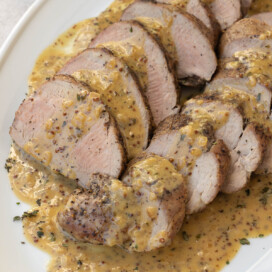
Roast Pork Tenderloin with Dijon Mustard Sauce
Equipment
- 12" stainless steel or cast iron fry pan large enough to get the pork in to
- Rimmed baking sheet ¼ sheet or ½ sheet size.
Ingredients
Pork Tenderloin
- 1 ¼-1 ½ pounds pork tenderloin
- 1 ½ tablespoons olive oil or avocado oil divided use
- ½ teaspoon sea salt
- ½ teaspoon ground black pepper
Dijon mustard Sauce
- 2 tablespoons unsalted butter
- ¼ cup finely chopped shallot 1 medium shallot
- ⅓ cup dry white wine swap low sodium chicken broth
- 4 ounces heavy cream or heavy whipping cream ½ cup
- 1 tablespoon creamy Dijon mustard
- 1 tablespoon whole grain Dijon mustard
- 2 teaspoons fresh chopped thyme leaves swap ¾ teaspoon dried thyme
Instructions
Season the pork
- Pre-heat the oven to 375°F. Line a sheet pan with a piece of baking parchment and ready near the stove. Trim the pork tenderloin of any silver skin if needed, and any extra fat. It's usually pretty lean. Rub the tenderloin with a little oil (2 teaspoons) and sprinkle with salt and pepper on all sides.
Sear and roast the pork
- Heat the pan over medium heat, when hot, add the rest of the oil and place the tenderloin into the pan. It should sizzle when it hits the pan. Allow the pork to sear on all sides, occasionally rolling it over with tongs or forks so all side become golden brown, about 10 minutes. Place the seared pork tenderloin on the baking sheet and brush lightly with a little extra olive oil. DO NOT WASH THE PAN.Roast pork for approximately 10 minutes or until the pork reads 140°F - 145°F with an instant read thermometer. While the pork is roasting, make the sauce.
- Remove pork from the oven and allow to rest covered with foil until the sauce is ready. When the mustard sauce is ready, slice the pork tenderloin, either on the diagonal or straight across, place on a platter and serve with the sauce.
Make the Dijon mustard sauce
- With the pan still warm over medium low heat, melt the butter, then add the shallots. Stir and scrape the bottom of the pan to get the tasty bits off the bottom.
- When the shallots are golden, add the wine and continue stirring. When the wine has cooked down, add the cream and the mustards whisked together until smooth, then add to the pan. Add the thyme. Stir until the sauce thickens, just a few minutes. Serve a little over the pork slices and the rest on the side for extras.
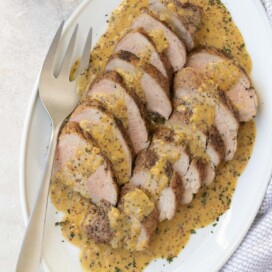

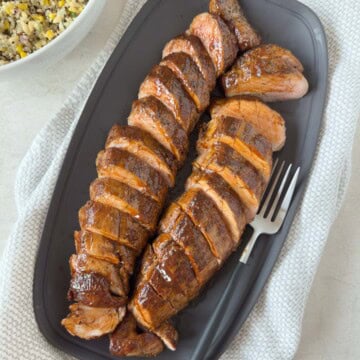
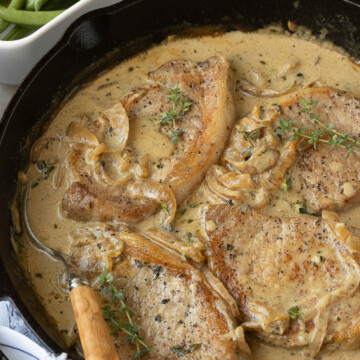

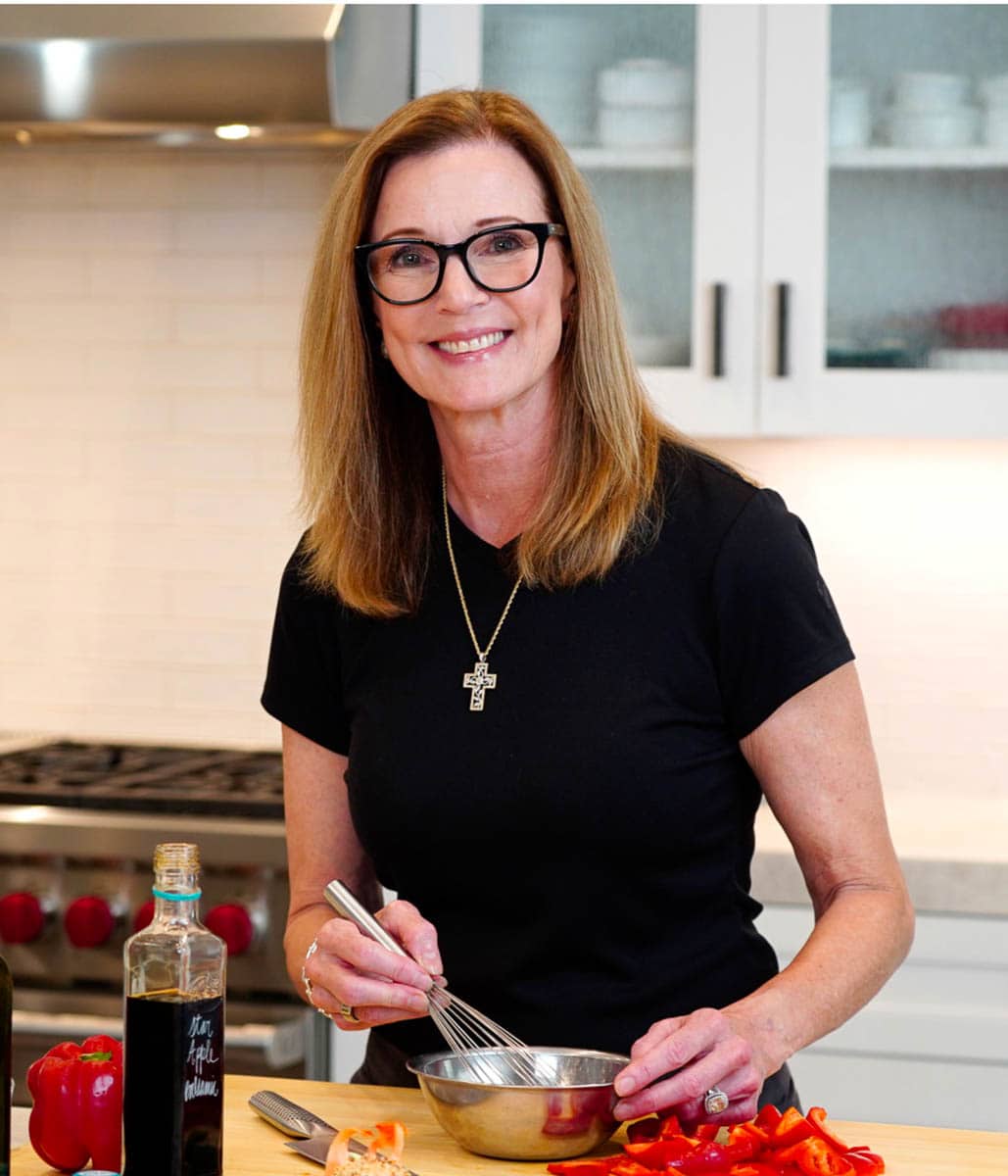
Jane says
Family loved it. Sauce did not thicken when adding cream. Was it because I hadn't cooked off the wine enough? Wound up adding instant potato flakes which helped thicken. Delicious!!! Thank you
Sally Cameron says
Hi Jane, that might be why. Good quick thinking on how to thicken. I made an additional note in the directions to cook most of the wine off. It's used to deglaze the pan and gets the tasty bits off the bottom of the pan before continuing. I am glad you enjoyed it and thanks so much for your comment. The photos in this post are also in an older format, so i will edit and improve how the look, which might made it easier to read.
Dana says
I made it exactly as written and my husband and I thought it was delicious. I will make it again and definitely for company. Thank you for a wonderful recipe.
Sally Cameron says
Love to hear that Dana! Thanks for reporting back and I a so glad your husband enjoyed. I have a new pork tenderloin recipe I've been doing with a mushroom sauce and will post in the fall.
Porsche guy says
Love the sauce! Used it for chicken too but a little more elegant with the pork tenderloin. Will do again!